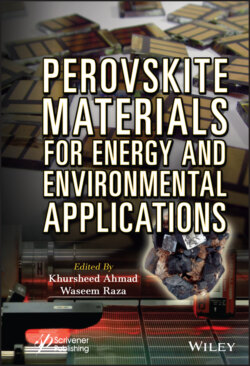Читать книгу Perovskite Materials for Energy and Environmental Applications - Группа авторов - Страница 12
1
Computational Approach for Synthesis of Perovskite Solar Cells
ОглавлениеA.S. Mathur* and B.P. Singh
Department of Physics, Institute of Basic Science, Dr. Bhimrao Ambedkar University, Agra (U.P.), India
Abstract
Computational approach has emerged as an effective technique for analyzing the synthesis of novel structures of perovskite solar cells. This approach involves modeling and simulation of solar cells. With respect to solar cells, numerical simulation has proven to be a viable tool over the years to study and comprehend the features and properties of solar cell devices, like the electrical, optical, and mechanical properties of complicated device structures of solar cell. The advantages of simulation are calculating the electrical behavior before the manufacturing process, calculating and visualizing internal electronic values that cannot be measured. It also helps to reduce processing costs and time spent on manufacturing solar cell devices by providing useful information on how the parameters of production can be varied to improvise the behavior of the device. Quantitative modeling of the photovoltaic response of the solar cell is an important subject for improving both the understanding of operation mechanisms and the device performance. In the present chapter, basic steps involved in the modeling of solar cells have been described along with some simulation approaches being used for perovskite solar cells, such as SCAPS-1D, AMPS, ASA, AFORS-HET, and so on. Results of some recent studies have also been presented, elucidating the importance of modeling and simulation approaches in the design and development of perovskite solar cells.
Keywords: Perovskite solar cells, modeling, simulation, photovoltaic parameters
